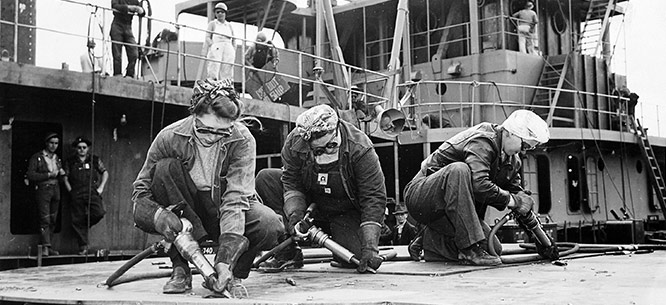Unequal Pay, Unequal Work
Unequal Pay, Unequal Work
Ruth Milkman’s Gender, Labor, and Inequality is a story of halting progress for women in the workforce, a march punctuated by setbacks, false starts, and abandonment by purported allies.

On Gender, Labor, and Inequality
by Ruth Milkman
University of Illinois Press, 2016, 328 pp.
In a recent interview with the Chronicle of Higher Education, the president of the American Political Science Association, Harvard’s Jennifer Hochschild, laments what she sees as rising pessimism in the social sciences. Scholars’ narrow focus on the deep-seated structural and psychological forces that continue to perpetuate gender and racial inequalities throughout our institutions now predominates. It is not that this research is wrong, and much of it is exceptional and urgent in our age of runaway economic inequality and political turmoil. But an overwhelming focus on continuing problems leads to an empirically incomplete picture of the world we inhabit, one that can be, in Hochschild’s words, “psychologically demobilizing.”
Ruth Milkman’s four decades of scholarship stands as an important exception to this general trend, as evidenced throughout her new collection of writings, On Gender, Labor, and Inequality, despite the clear moral commitment she brings to her scholarship, and the obvious inequities that remain between men and women in the workplace. As a result, readers are treated to a story of halting progress for women in the workforce, a march punctuated by setbacks, false starts, and abandonment by purported allies. But the broad story throughout these chapters is one of advancement, even in the face of durable ideological commitments and material interests militating against women’s economic equality. It is a fascinating and timely set of articles.
It is also a story filled with strange paradoxes and unanticipated consequences. We learn of early victories in the ongoing battle for equal pay for equal work. In the turbulent Second World War years, women’s share of the manufacturing workforce increased dramatically as working-age men joined the fight overseas. In the auto industry, for example, women comprised just 5 percent of the workforce in the spring of 1942, and 25 percent just a year-and-a-half later. Ford, Studebaker, and other major firms signed contracts with the then-mighty United Auto Workers (UAW) that included equal-pay clauses. Was the union responding to women’s desire for pay equity with their male peers on the assembly line?
Not exactly. Instead, the UAW worried about the precedent separate wage scales could set once the war ended. Management might grow accustomed to the (lower) “female” rates, and offer them to the returning veterans. Thus “equal pay for equal work” became a rallying cry to protect male wages from falling to what women workers made during the war. Never was it seriously considered by the union or management that women would stay in the factories after the soldiers returned home, despite surveys indicating that the vast majority of female factory workers wanted to remain in their new, high...
Subscribe now to read the full article
Online OnlyFor just $19.95 a year, get access to new issues and decades' worth of archives on our site.
|
Print + OnlineFor $35 a year, get new issues delivered to your door and access to our full online archives.
|





